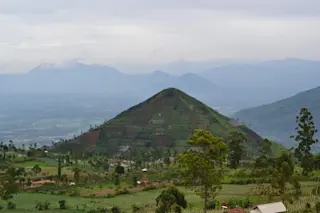You are drifting down the sluggish, muddy Tigris River on a reed raft, headed for a prominent spur of rock rising from a broad plain. Upon the rock stand the massive walls of brightly painted temples. Just behind them soars a brilliantly colored temple tower, or ziggurat, nearly 200 feet high, with a pair of smaller ziggurats in the background. Beyond sprawl the roofs of vast royal palaces housing magnificent reception halls and sealed underground tombs. As the boat docks, sunbaked sailors and stevedores unload goods and tribute, everything from African ivory to Anatolian metals to Afghan lapis lazuli. Traders, donkeys, pilgrims, horses, artisans, priests, and diplomats pass through the dozen gates above. This is bustling Assur, a town of perhaps 30,000, one of the most dazzling sights in Mesopotamia and in the entire ancient world. Assur was the birthplace and spiritual center of Assyria, the mother of all empires. ...
Treasure Under Saddam's Feet
As the waters of the Tigris rise and the world awaits war, archaeologists fear for priceless ancient marvels of the first great empire
More on Discover
Stay Curious
SubscribeTo The Magazine
Save up to 40% off the cover price when you subscribe to Discover magazine.
Subscribe













